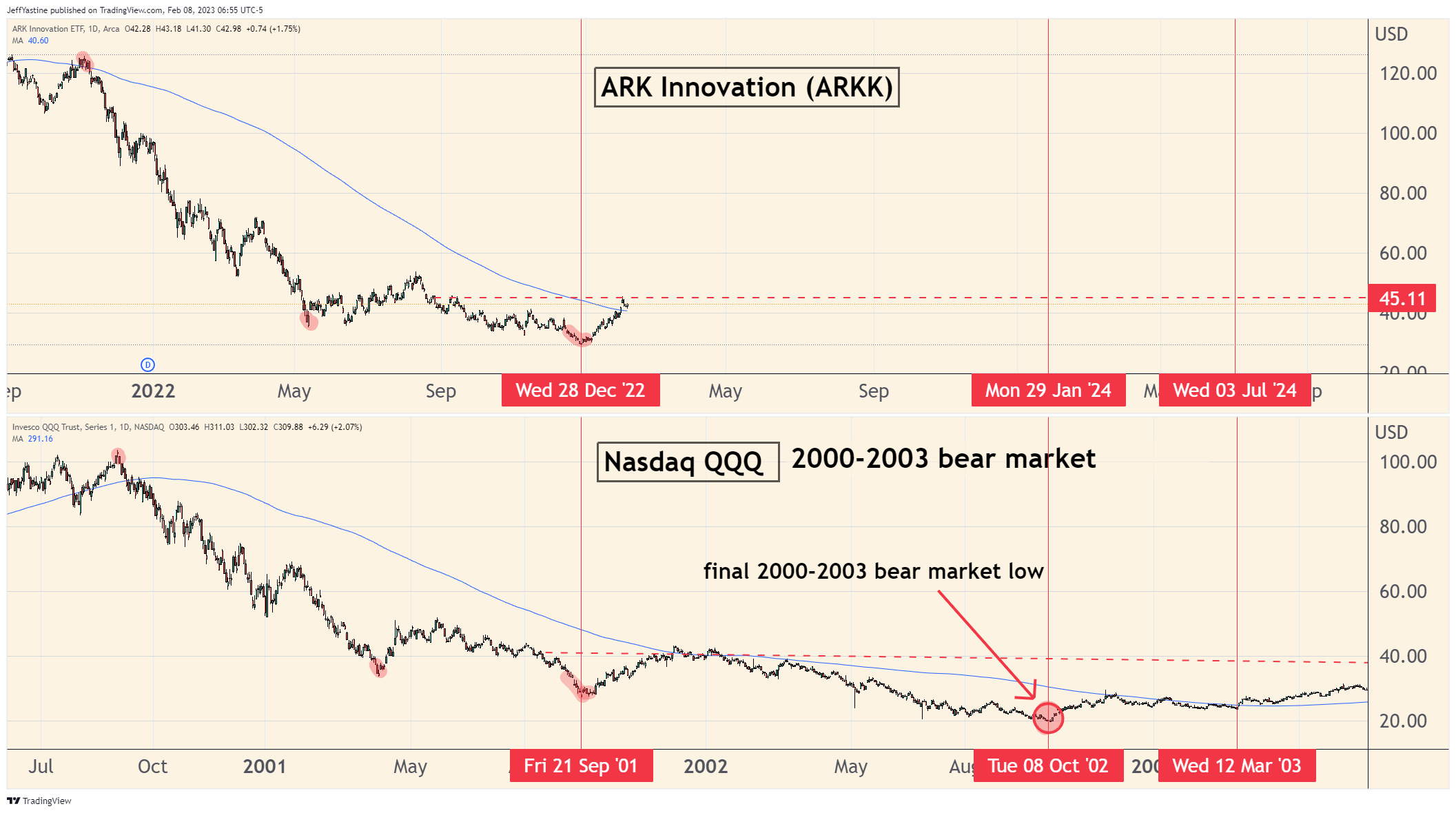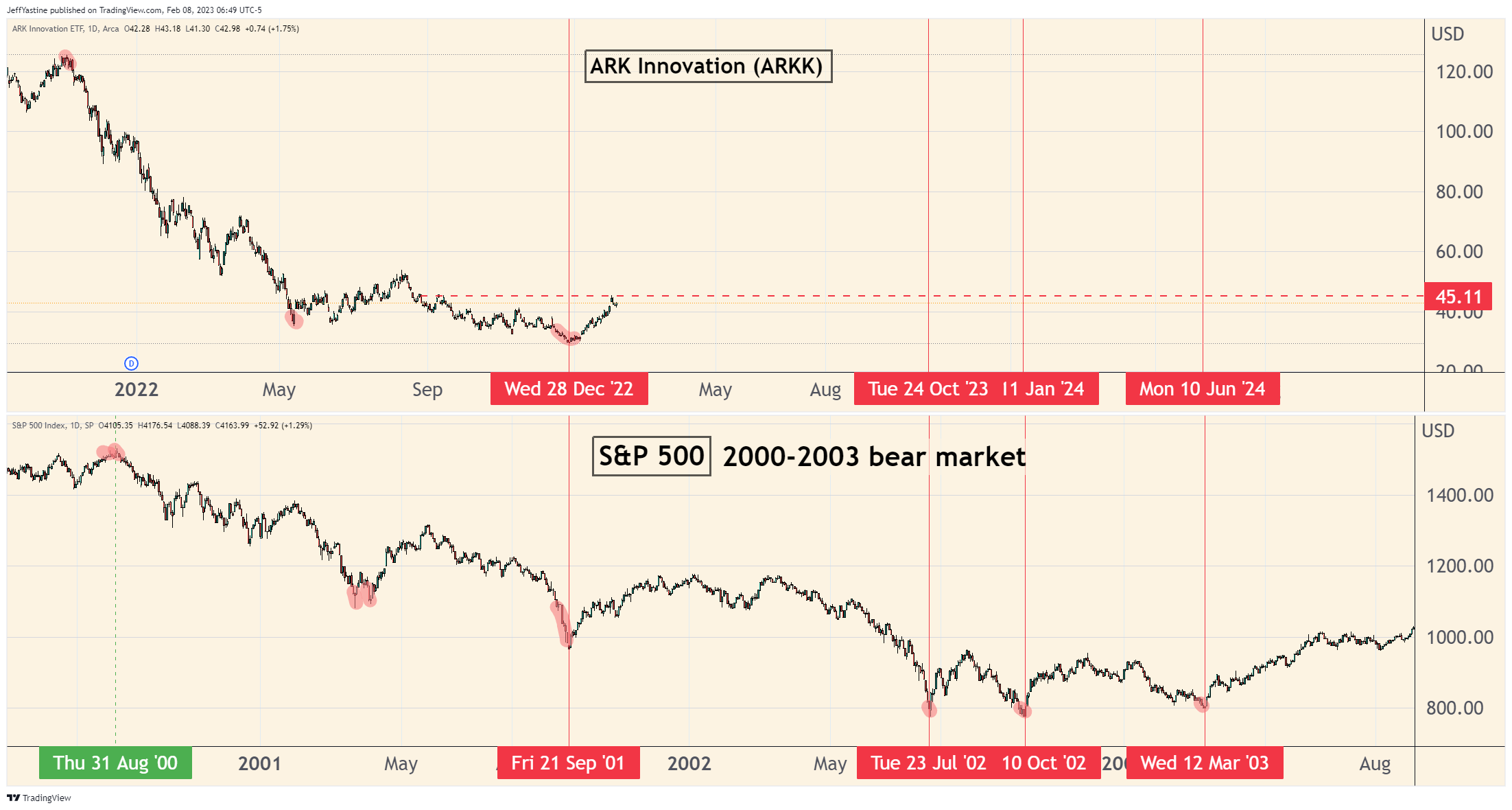Is the Bear Market Dead...or Sleeping?

Our current market situation reminds me of a story told by the author and humorist Mark Twain...
A mining prospector dies in California's high Sierra Mountains and finds himself at the pearly gates of heaven. The problem? There's a long line of other mining prospectors in front of him - all waiting to be quizzed by St. Peter before they can be let in.
So the impatient prospector has an idea, and shouts: "Gold discovered in hell!"
In a flash, the crowd dashes down a black staircase leading to the nether region, eager to investigate the rumor.
St. Peter is impressed. "Quite clever," he says to the old prospector. "You may enter," and the pearly gates swing open.
But the prospector lingers, uncertain. "On second thought," he says, "maybe I'll go join the other boys."
"There just might be some truth to that rumor after all."
A few of you may have read that story before. It's one of my favorites because it demonstrates a challenge that all of us must strive to overcome, in order to become better investors and traders...
The challenge is this: Sometimes we get so caught up in the excitement (and yes, greed) of trading and investing that we will ourselves to believe certain things that are likely untrue.
That's a common problem in the stock market.
For example, some smart people think the bear market is over.
Wall Street just experienced one of its biggest rallies in January ever. And in the handful of times in history when that happened, the market went on to have a great year as well. So headlines like this that I saw on Marketwatch.com in the last few days...are to be expected:

I'd really like to believe this narrative, believe me.
But Wall Street is a narrow lane, lined with funhouse mirrors. "Reality" in the stock market is always a series of distorted perspectives - sometimes right, sometimes wrong. Never certain.
For the record, I think the bear market is merely hibernating.
For example, we keep reading how resilient the US economy is. It's a convincing argument. US economic reports are generally still good. Consumers are still spending. After a year of interest rate hikes, shouldn't the recession be here by now, or maybe it never arrives at all?
But what if that "strength" isn't really a reflection of economic growth at all?
What if it's really the result - as JP Morgan analysts recently stated - of millions of US consumers spending down a stockpile of cash savings built up during the pandemic, when mortgage and rent payments were suspended and government relief money flowed freely?

And don't forget a handful of other key points...
The Federal Reserve is still keen to hike interest rates yet higher. A "pause" in the hiking cycle just doesn't seem in the cards yet.
The risk of a federal debt default remains on the table. I still doubt one will happen, but if it were ever to occur - this would be the year, with both parties heavily dug in and (apparently) unwilling to compromise enough to get a deal.
It takes 12 to 18 months for interest rate hikes to have an impact on the US economy. If that's the case, then the Fed's rate hikes last year will start taking their toll in the second half of this year.
Faced with this dilemma - a bear market that may or may not be dead - what's an investor to do?
#1: Recognize that rallies and selloffs take hold at the most unlikely moments.
For instance, the stock market got off to a terrible start the first week of January. But I noticed some unusual strength late that week. On Sunday, January 8, I asked the question: "Is a Big Bear Market Rally in the Wings?"

Turns out I was right (which is not always the case). The market went on to rally 20%.
For premium subscribers, we got to work at that time with a series of stock ideas. Last week, we began taking some profits on those and earlier bets...
- Niu Technologies (NIU): +77%
- Jumia Technologies (JMIA): +47%
- Alibaba (BABA): +36%
- Allegiant Travel (ALGT): +36%
- Clear Secure (YOU): +16%
We still have other nice gains still open in the goodBUYs portfolio. Those can serve as the basis for further profits if it turns out I'm wrong and the bull market really has returned.
#2: Avoid the temptation to make really big "all or nothing" bets.
When I wrote on January 8 that a big bear market rally could be starting, we didn't "plunge in" to the market. We waded in bit by bit, like children at the beach for the first time.
For example, at the start of the year the portfolio was around 80-85% cash. By the end of January, the portfolio was only around 35% cash. After last week's "sells" the portfolio is around 65% in cash.
The point is, if there really is a bull market that's happening under our noses - it's going to happen in fits and starts for a long time. I'll have plenty of opportunities to get involved by buying one stock, and if the stock heads higher, I can buy a couple more, and then a few more after that.
But if I plunge in with most or all of my cash - and I turn out to be wrong and the market reversed sharply lower - I could create a lot more damage (i.e. big losses) to my portfolio than I intended.
#3: Keep cutting your losses
I have trading friends who argue in a good-natured way that they like such-and-such stock, they want to own it for the long-term, and they don't care whether they buy it now - and the stock falls another 25% or 50% if the bear market continues.
I disagree.
The problem is that we can wind up accidentally owning one stock, then a series of stocks - that are all substantially underwater as a bear market drags on and on.
In the process, we drain our portfolio of cash. So we lack flexibility to take advantage of new opportunities - stocks that might be the big leaders in the next bull market to come.
So I'd rather cut my losses, preserve my cash - and most importantly, preserve my self-confidence (this of both as a precious resource that needs to be conserved) - than let it dribble away in the event the bear market keeps going further than most of us thought.
If I'm right, how far could this really go once "the bear" comes out of hibernation?
I've been showing my premium subscribers this ongoing chart below. It shows the uncanny bear market similarities between the highly-speculative ARK Invest (ARKK) etf of today with the Nasdaq QQQ etf during the 2000-2003 bear market:

During the 2000-2003 bear market, the QQQs rallied 50% from the lows of September 2001 before slowly fading lower. Since early January, the ARKK etf has also rallied 50% off its lows.
If I'm right, then we could see a lot of back-and-forth trading activity where the overall market does little - before fading lower in the second half of the year.
And it's worth showing you what the S&P 500 looked like during the last phase of the 2000-2003 bear market:

The point I'm trying to make...we may have a very frustrating 12 to 18 months ahead.
If the comparisons between our 2023 market and the market of 20 years ago hold true, we could see occasional mini-rallies that make it look like the market is about to run to new near-term highs, alongside months of "sideways" trading action.
And all of that before "the bear" comes out of hibernation.
Let's keep all this in mind - caution is warranted - as we watch things play out in coming months.
Jeff Yastine
Member discussion